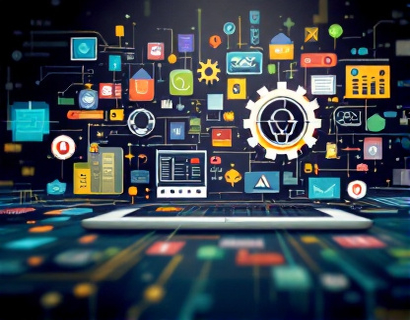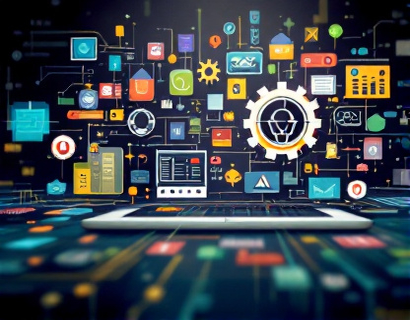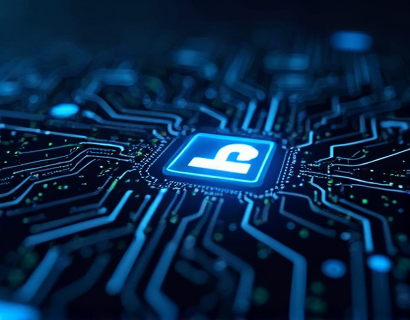AI & Blockchain Integration: A Business User's Guide to Seamless Digital Transformation and Growth
The integration of Artificial Intelligence (AI) and Blockchain technology represents a pivotal shift in the landscape of digital transformation. For business leaders aiming to stay competitive and innovative, understanding how to effectively combine these technologies is crucial. This guide serves as an essential resource, offering actionable strategies to streamline operations, enhance security, and unlock new growth opportunities. By leveraging the strengths of both AI and Blockchain, businesses can navigate the complexities of the digital age more efficiently and effectively.
Understanding AI and Blockchain
Before diving into integration strategies, it's important to grasp the fundamental concepts of AI and Blockchain. AI refers to the simulation of human intelligence processes by machines, particularly computer systems. These processes include learning (the acquisition of information and rules for using it), reasoning (using rules to reach approximate or definite conclusions), and self-correction. AI technologies such as machine learning, natural language processing, and predictive analytics are transforming industries by automating tasks, providing insights, and enhancing decision-making.
Blockchain, on the other hand, is a decentralized digital ledger technology that records transactions across multiple computers in such a way that the registered transactions cannot be altered retroactively. This technology ensures transparency, security, and immutability, making it ideal for applications requiring trust and traceability. Blockchain's distributed nature eliminates the need for intermediaries, reducing costs and increasing efficiency.
Synergies Between AI and Blockchain
The true power of integrating AI and Blockchain lies in their complementary capabilities. AI can process and analyze vast amounts of data stored on a Blockchain, extracting valuable insights and patterns. Conversely, Blockchain can provide a secure and transparent environment for AI models to operate, ensuring data integrity and trust. This synergy opens up numerous possibilities for businesses looking to enhance their digital capabilities.
Enhanced Data Security
One of the primary benefits of integrating AI and Blockchain is the significant improvement in data security. Blockchain's inherent security features, such as cryptographic hashing and consensus mechanisms, protect data from tampering and unauthorized access. AI can further enhance security by detecting anomalies and potential threats in real-time. For instance, machine learning algorithms can monitor Blockchain transactions and identify unusual patterns that may indicate a security breach, enabling proactive measures to be taken.
Improved Data Integrity and Trust
Data integrity is crucial for any business, and the combination of AI and Blockchain ensures that data remains accurate and trustworthy. Blockchain's immutable ledger prevents any alteration of historical data, while AI can validate and verify data entries in real-time. This dual-layer approach ensures that businesses can rely on the data they use for decision-making, reducing the risk of errors and fraud.
Optimized Process Automation
AI's ability to automate repetitive and time-consuming tasks is well-known, but when integrated with Blockchain, the efficiency of process automation is taken to new heights. Smart contracts on the Blockchain can be programmed to execute automatically when certain conditions are met, and AI can optimize these conditions based on real-time data. For example, in supply chain management, AI can predict demand and adjust inventory levels, while smart contracts ensure that transactions are executed seamlessly and transparently.
Enhanced Customer Experience
The integration of AI and Blockchain can also lead to a more personalized and secure customer experience. AI-driven analytics can provide deep insights into customer behavior and preferences, enabling businesses to offer tailored products and services. Blockchain ensures that customer data is securely stored and managed, giving customers greater control over their personal information. This combination not only enhances customer trust but also drives loyalty and satisfaction.
New Revenue Streams
Businesses that successfully integrate AI and Blockchain can unlock new revenue streams. For instance, companies can offer premium services based on AI-driven insights derived from Blockchain data. Additionally, the use of tokenization on the Blockchain can create new financial instruments and business models. AI can optimize these models to maximize efficiency and profitability, opening up innovative opportunities for growth.
Actionable Strategies for Integration
For businesses looking to integrate AI and Blockchain, here are some actionable strategies to consider:
1. Assess Current Infrastructure
Begin by evaluating your existing IT infrastructure to identify areas where AI and Blockchain can add value. Consider the types of data you handle, the processes you want to automate, and the security requirements of your operations. This assessment will help you prioritize initiatives and allocate resources effectively.
2. Start Small
Avoid the temptation to overhaul your entire system at once. Start with pilot projects that focus on specific use cases, such as supply chain tracking or customer service enhancement. This approach allows you to test the integration, gather insights, and refine your strategy before scaling up.
3. Invest in Talent and Training
Integrating AI and Blockchain requires a skilled workforce. Invest in hiring experts with expertise in both technologies or provide training for your existing team. Understanding the synergies between AI and Blockchain is crucial for successful implementation and ongoing management.
4. Leverage Open Source Tools
Utilize open-source tools and platforms to reduce costs and accelerate development. Many open-source projects offer robust frameworks for AI and Blockchain integration, providing a solid foundation for your initiatives. This approach also fosters a community-driven development environment, ensuring you stay updated with the latest advancements.
5. Ensure Compliance and Regulatory Adherence
Navigating the regulatory landscape is essential when integrating AI and Blockchain. Ensure that your integration complies with relevant laws and regulations, particularly those related to data privacy and security. Staying compliant not only avoids legal issues but also builds trust with customers and stakeholders.
6. Monitor and Optimize
Once your AI and Blockchain integration is up and running, continuous monitoring and optimization are key. Use AI to analyze performance metrics and identify areas for improvement. Regularly update your models and processes to adapt to changing business needs and technological advancements.
Case Studies and Real-World Applications
To better understand the practical applications of AI and Blockchain integration, let's explore a few real-world examples:
Supply Chain Management
A leading retailer implemented a Blockchain-based system to track the origin and journey of products from manufacturers to stores. By integrating AI, they were able to predict demand fluctuations and optimize inventory levels in real-time. This not only reduced costs but also improved customer satisfaction by ensuring product availability.
Financial Services
Several banks have started using Blockchain for cross-border payments, reducing transaction times from days to minutes. AI algorithms analyze transaction patterns to detect fraud and ensure compliance with regulatory requirements. This integration has significantly enhanced the efficiency and security of financial operations.
Healthcare
In the healthcare sector, a hospital chain used Blockchain to securely store and share patient records across different facilities. AI-powered analytics helped in managing patient data, identifying trends, and improving treatment outcomes. This integration not only enhanced data security but also streamlined patient care processes.
Challenges and Considerations
While the benefits of integrating AI and Blockchain are clear, businesses must also be aware of potential challenges:
Technical Complexity
Integrating AI and Blockchain involves complex technical challenges. Ensuring compatibility between different systems and technologies requires careful planning and expertise. Businesses should consider partnering with technology providers who specialize in these areas to mitigate risks.
Cost Implications
Initial investment costs can be significant, especially for small and medium-sized businesses. However, the long-term benefits often outweigh the upfront expenses. Conduct a thorough cost-benefit analysis to justify the investment and plan for phased implementation if necessary.
Regulatory Uncertainty
The regulatory environment for AI and Blockchain is still evolving. Stay informed about changes in laws and regulations that may impact your integration efforts. Engaging with regulatory bodies and industry groups can provide valuable insights and help shape favorable policies.
Conclusion
The integration of AI and Blockchain represents a transformative opportunity for businesses aiming to thrive in the digital age. By enhancing data security, improving process automation, and unlocking new revenue streams, this combination can drive significant growth and innovation. By following the strategies outlined in this guide, businesses can navigate the complexities of integration and harness the full potential of these cutting-edge technologies.










































